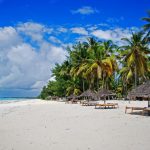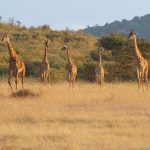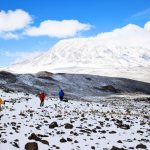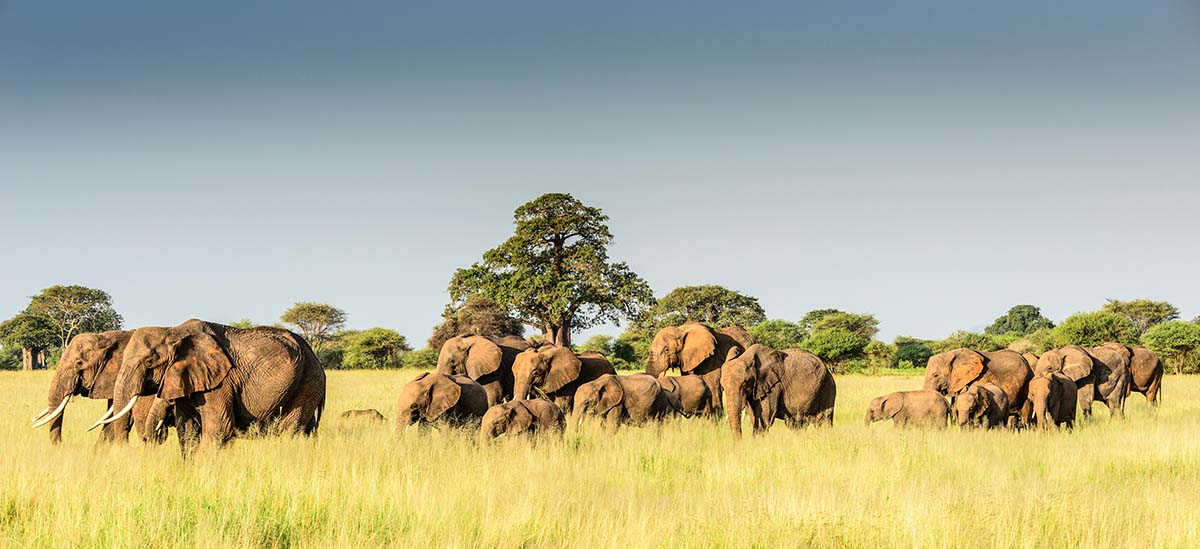7 Days Tanzania Camping Safari
Safari Overview
The 7 Tanzania Camping Safari is a thoughtfully planned safari itinerary that enables you to see the best of Northern Tanzania’s safari circuit at a reasonable price. During this Tanzania camping trip, see the Bushmen in Tarangire Park, Lake Manyara, and Lake Eyasi, as well as Serengeti National Park and the Ngorongoro Crater.
Destinations
- Arusha
- Tarangire National Park
- Lake Natron
- Serengeti National Park
- Ngorongoro Conservation Area
- Mto wa Mbu
Route Itinerary
Day 1: Arusha – Tarangire National Park
You will leave for Tarangire National Park after a quick briefing in the morning. The park’s grassland, baobab trees, seasonal marshes, and lagoons are all frequented by enormous elephant herds. Many species, including as giraffes, bushbucks, and hartebeests, as well as the bizarre-looking gerenuk and fringe-eared oryx, are drawn to the Tarangire River because it provides them with oxygen. Throughout the park, there are also buffaloes, zebras, and wildebeests, all of which are frequently pursued by lions and other predators. Cheetahs are hardly seen, although leopards are occasionally sighted. From the open top of the safari vehicle, you can take in the view and see the wildlife. You will arrive at a campsite inside the park in the late afternoon, where you will spend the night in a tent.
- Meals: Dinner and Lunch
Day 2: Tarangire National Park – Lake Natron
Go from Tarangire National Park to the multicultural community of Mto wa Mbu after breakfast. From here, a stunning but rough gravel road descends the Rift Valley Escarpment with Ol Doinyo Lengai, the Maasai people’s “holy mountain,” in the distance. Our goal today is the charming Masai village of Ngare Sero, an oasis in the hot and dusty Rift Valley. A pink glow is produced in the distance by the thousands of flamingos that breed and consume the algae of the alkaline Lake Natron. The Maasai guide will take you on a stroll to a nearby waterfall in the late afternoon before you head back to the campsite for the evening.
- Meals: Breakfast, lunch, and dinner
Day 3: Lake Natron – Serengeti National Park
Your car will rise out of the Rift Valley and onto the grassy plains of the Serengeti by midday after an early start, traversing difficult dirt tracks with breath-taking views. The Serengeti is known as “endless plains” in Maasai because of how far the grassland savannah spans. The Serengeti, the most famous park in Tanzania, has the largest wildlife migration in the world, with hundreds of thousands of animals moving there in search of new grass and water. In the northern or central parts of the park, you’ll spend the night at a campground.
Day 4: Serengeti National Park
In the Serengeti National Park, game viewing is done all day long. You will either go on a full-day game drive or join early morning and late afternoon drives in the Seronera region, depending on where you spent the previous night. Between January and March, calves and foals are born, and between December and May, large herds of wildebeests and zebras can be seen. Moreover, the Seronera region is the best place to witness the nocturnal and solitary leopard. At a campsite in the Seronera region, you’ll spend the night. There are alternatives for breakfast, lunch, and dinner.
Day 5: Serengeti National Park – Ngorongoro Conservation Area
For the morning game drive, which is scheduled, you might encounter some animals you haven’t previously seen in the Serengeti. Animals are more active early in the day before the temperature peaks around noon. You will leave the Serengeti plains after lunch and travel to the highlands of the Ngorongoro Conservation Area. A campground with views of the Ngorongoro Crater’s collapsed volcano is where you’ll spend the night. It’s the perfect spot for a sundowner at the sunset.
- Meals: Dinner, lunch, and breakfast.
Day 6: Ngorongoro Crater – Mto wa Mbu
Rise and shine! To climb the steep slope that descends into the 600-meter-deep crater, one must get up early in the morning. Although the slopes are covered in trees, the surrounding area swiftly changes to savannah, with the odd acacia tree tossed in for good measure. The crater is home to amazing wildlife, including the Big Five (lion, elephant, buffalo, rhinoceros, and leopard) if you’re lucky. Hippos, zebras, wildebeests, warthogs, and some of the region’s 500+ bird species should all be visible. After spending the entire morning watching animals and having a picnic lunch in the crater, you will go to Mto wa Mbu where you will spend the night.
- Meals: Dinner, lunch, and breakfast.
Day 7: Mto wa Mbu – Arusha
After a leisurely breakfast, you’ll set out on your return trip to Arusha, where you’ll arrive about lunchtime. You will be dropped off at the airport or in the heart of the city.
- Meals: Brunch, lunch, and dinner.
Booking Now
Items included:
- Accommodation according to the itinerary
- Transportation in a 4×4 safari vehicle
- Professional, English-speaking guide
- Professional, English-speaking safari cook
- Overnight stays in safari tents
- Camping equipment (tents, sleeping mats, chairs, tables etc.)
- Meals according to the itinerary
- Mineral water
- All mentioned activities
- All national park fees
- Flying Doctors insurance (AMREF) during the safari
Items excluded:
- International Flights
- Alcoholic and soft drinks not included
- Visa fees
- Tips
- Personal spending money for souvenirs etc.
- Travel insurance






















